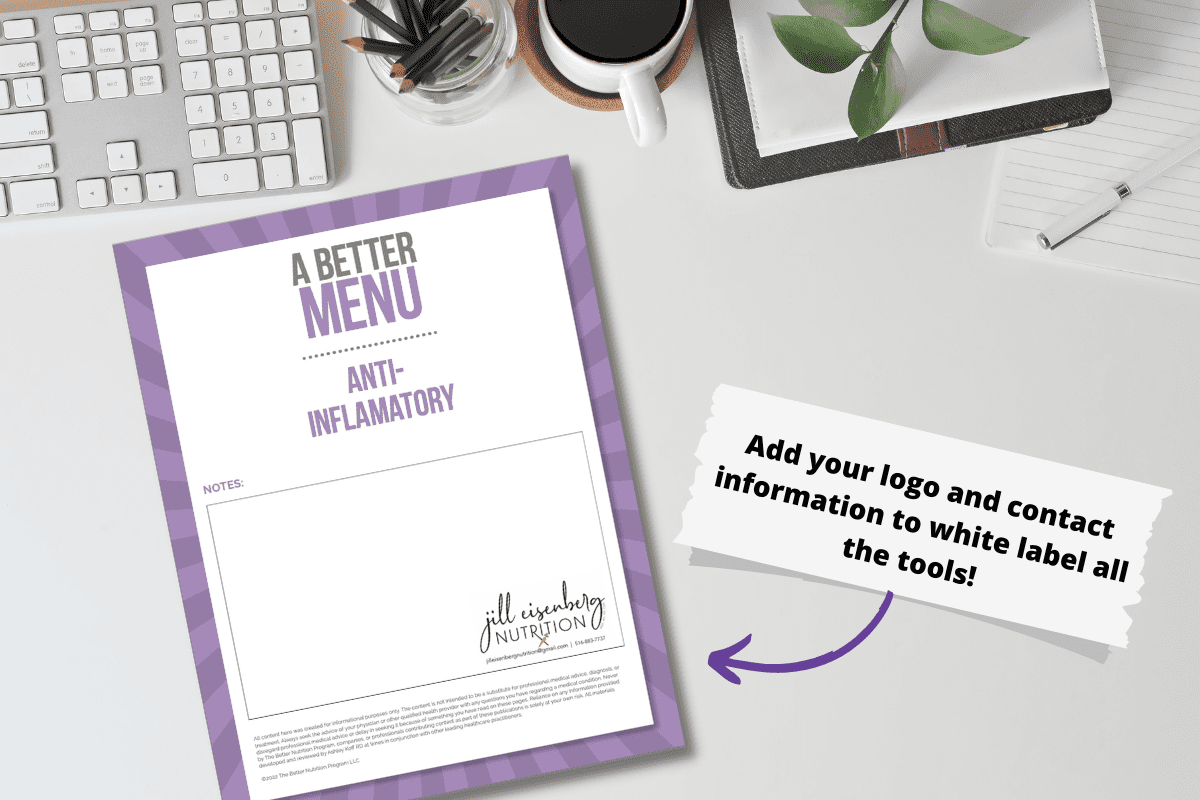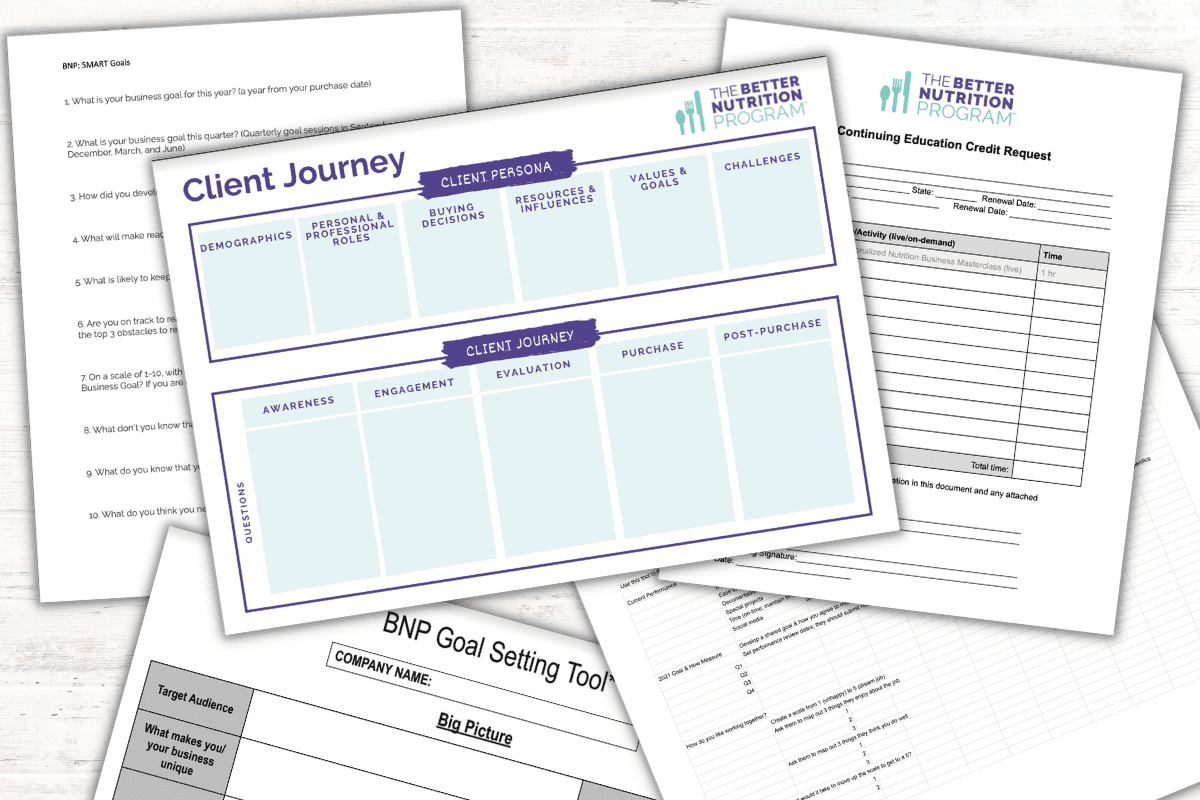Learn from two practitioners using the GI-MAP Test, a stool test developed to provide practitioners a diagnostic tool that offers insight into a patient’s unique microbiome, to efficiently get better intel for better patient outcomes.
At The Better Nutrition Program, we are obsessed with total nutrition assessment beginning with current digestive health. We believe that the better quality the intel, the better the (potential) outcomes. That’s how both practitioners and patients win.
Our tools, like The Better Nutrition Digestive Evaluation, are designed to complement other assessments – like the GI-MAP Test – for the most complete patient picture. When you fully understand a person’s current digestive health and get insights into what may compromise or prevent better digestive health, you get a clear roadmap for their care.
“For over a decade now, I require a completed digestive assessment before working with a client. When you know about their digestion, you get a clear picture of their current health issues and potential.”
Ashley Koff RD, author of “Recipes for IBS” and chapter contributor in Integrative Gastroenterology textbook

What is the GI Map Test?
According to Diagnostic Solutions Laboratory, their GI–MAP stool test utilizes cutting edge, quantitative polymerase chain reaction (PCR) technology to provide a true DNA/PCR based stool test. This technology has high sensitivity, specificity and a rapid turnaround. The GI pathogens include bacteria, parasites and viruses.
The Gastrointestinal Microbial Assay Plus (GI-MAP) from Diagnostic Solutions Laboratory is the first and only stool test in the world to begin running fully quantitative PCR on multiple GI targets, including pathogenic and opportunistic bacteria, worms, yeasts, parasites, and comprehensive antibiotic resistant genes, alongside intestinal health, digestive, and immune markers.
Not all pathogens cause disease if they are present. Knowing exactly how much of an organism is present, in combination with immune markers, gives the practitioner important information for better clinical decision-making.
The updated GI-MAP now includes 22 new markers:
- 5 additional H. pylori virulence factors (8 total)
- Epstein-Barr & Cytomegalovirus
- Phyla microbiota ratios
- 5 worm species
- Additional autoimmune and opportunistic bacteria
“After years of trying to get a diagnosis, and trying different things to improve my digestive health, I met a healer. She reviewed my blood (at her NYC apartment, likely using a Fisher-Price microscope) and diagnosed me with a worm. My Rx: a 7-day, >40 oz/day goat’s milk only cleanse to kill the worm that her assessment confirmed I had since age 15. I did it. I felt amazing. And on the 10th day, I was back to bloated and looking like a 6 month pregnancy. I vowed to never drink goat’s milk again, and fortuitously met an integrative gastroenterologist who helped me heal my digestion for real. OH how I wish any of the practitioners I met before had run a GI-MAP test!”
Ashley Koff RD
Here’s How 2 Better Nutrition Experts Win with The GI-MAP Test
For our purposes, we define “Better Nutrition Expert” as those who are trained in the science and utilize it along with their experience to help individuals meet their health goals. These practitioners are both evidence and practice-based.
Copyright Debra Shore Photography
On the left, meet Dianne Rishikof, MS, RDN, LDN, IFNCP, a Registered Dietitian, Licensed Nutritionist who practices integrative and functional nutrition. She uses innovative cutting edge techniques and a holistic approach to get to the root of and address health issues and heal the body from the inside out.
On the right, meet Alicia Galvin MEd, RD, LD, CLT, IFNCP. She practices in the Dallas/Fort Worth area focusing on fertility, autoimmunity, and chronic inflammatory conditions. She is the co-founder of SIBO Academy, an online training program for RDs in all things SIBO.
In the below interview, we will use their initials, DR and AG, when sharing responses.
What led you to start using The GI-MAP Test?
DR: About six years ago, I discovered functional medicine, the need and ability to get to the root cause of someone’s complaints. I knew there was so much more than what colonoscopy told us about their digestion.
AG: For the last six years, I’ve worked in functional nutrition, the last two to three specializing in GI. So many people come to us frustrated by an inability to get answers or effective protocols. I was using some other tests, but a colleague recommended the GI-MAP test noting they were getting better results. I looked into it and found it so comprehensive. It turned out to be less expensive than other tests too.
What do you like best about The GI-MAP Test?
DR and AG: The interpretive guide – it’s so comprehensive!
DR: I always use it. I really like how they organize it. There’s a section for normal bacteria; autoimmune triggers; calprotectins; gut immune (IGAs) etc.
AG: It was really helpful initially, to understand results and get treatment ideas. I also like how comprehensive the test is – especially the inclusion of pathogens, H. pylori, and markers of intestinal health like beta-glucuronidase. It’s really helpful with my GI clients but also those dealing with hormonal issues.
How do you use the test within your practice? Any issues with other practitioners or concerns about ‘being out of scope’?
AG: I work in a clinic so the transactions occur through the clinic, which sets the test pricing, etc. I am very clear in my notes, I am supporting optimal digestion not diagnosing.
DR: I run a private practice. I charge the patient for the test and then the lab bills me. Patients never feel any obligation to have to buy the test; I always reassure them that I can treat them either way.
What doesn’t The GI Map Test do? What do you wish it could?
DR: I am really happy with it. It’s rare, but if a patient’s results come back with not much and they are really sick, then I have to look elsewhere. But the majority of the time, the GI-MAP Test helps me develop and implement a personalized 5R plan for each client. (Note: The 5R Protocol is a widely-accepted clinical guideline to treating pathogens and imbalances in the GI microbiota and restoring health to the gastrointestinal tract.)
AG: Some other tests break out data further (eosinophils, short chain fatty acids, types of fats versus steatocrit) but otherwise I find it really complete. I deal more with helping patients and other practitioners understand the scope of the test. For example, the client that says “I had a stool test and my doctor says I am negative for SIBO.” I explain that that’s not the appropriate use of this tool. It can complement a SIBO test but doesn’t replace it. I will also use it for the stool anti-gliadin test and a blood test to assess antibodies to the different peptides of gluten.
Can you share a case study with us?
DR: I have an 18 year old male patient with autism. He did the GI-MAP. We identified several dysbiotic bacteria, a couple autoimmune triggers, and low SIgA. I put him on biocidin and titrated up to a hefty dose for a month, then tapered him off. I also put him on colostrum and S. Boulardii to help with the SIgA. Improvement in symptoms included: less gas, much less stomach pain, both of which resulted in less anxiety and less self-harming behavior.
AG: Here are two quick examples of how I use the GI-MAP Test for better patient outcomes.
- We did a GI-MAP test for my client who is over 50. His calprotectin came back extremely elevated. I sent him immediately to his doctor to get a colonoscopy.
- For my SIBO clients, I need to know first if they have a parasite. We have to deal with the parasite first. In several clients after confirming these results, I have them see the nurse practitioner for assessment and a prescription. Then we start a SIBO protocol. I get much better results when the large intestine is addressed.
Thank you to our Better Nutrition Experts. Let us know if you found this evidence and practice-based information helpful.
Are you using the the GI-MAP Test or other tests for better assessments? These tests complement the tools found within The Better Nutrition Program, including The Better Nutrition Digestive Evaluation (also available in Spanish). We’d love to chat – comment below or share this post and tag us on social media @TheBetterNutritionProgram
Have questions about The Better Nutrition Program? Email us at team@thebetternutritionprogram.com



















